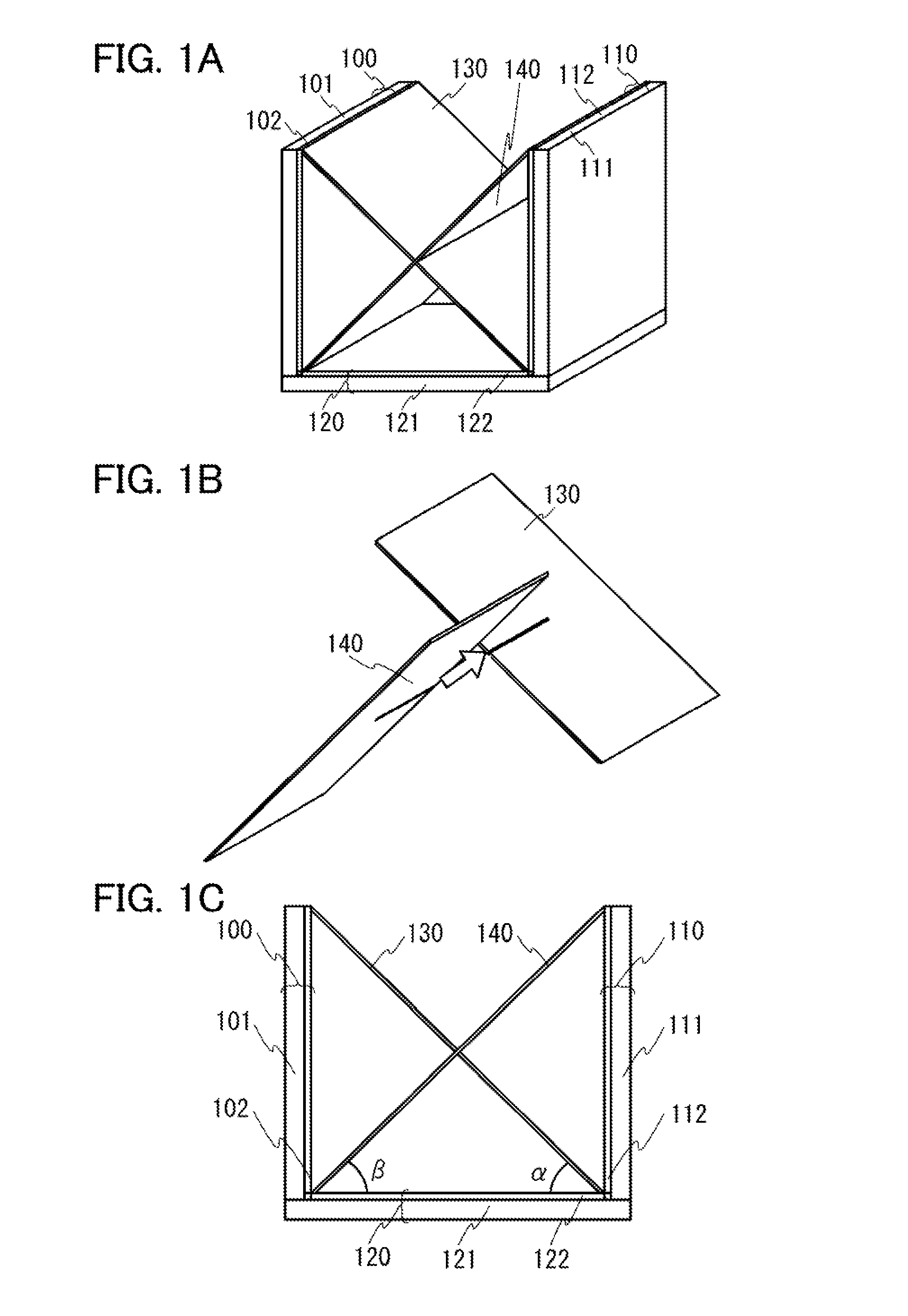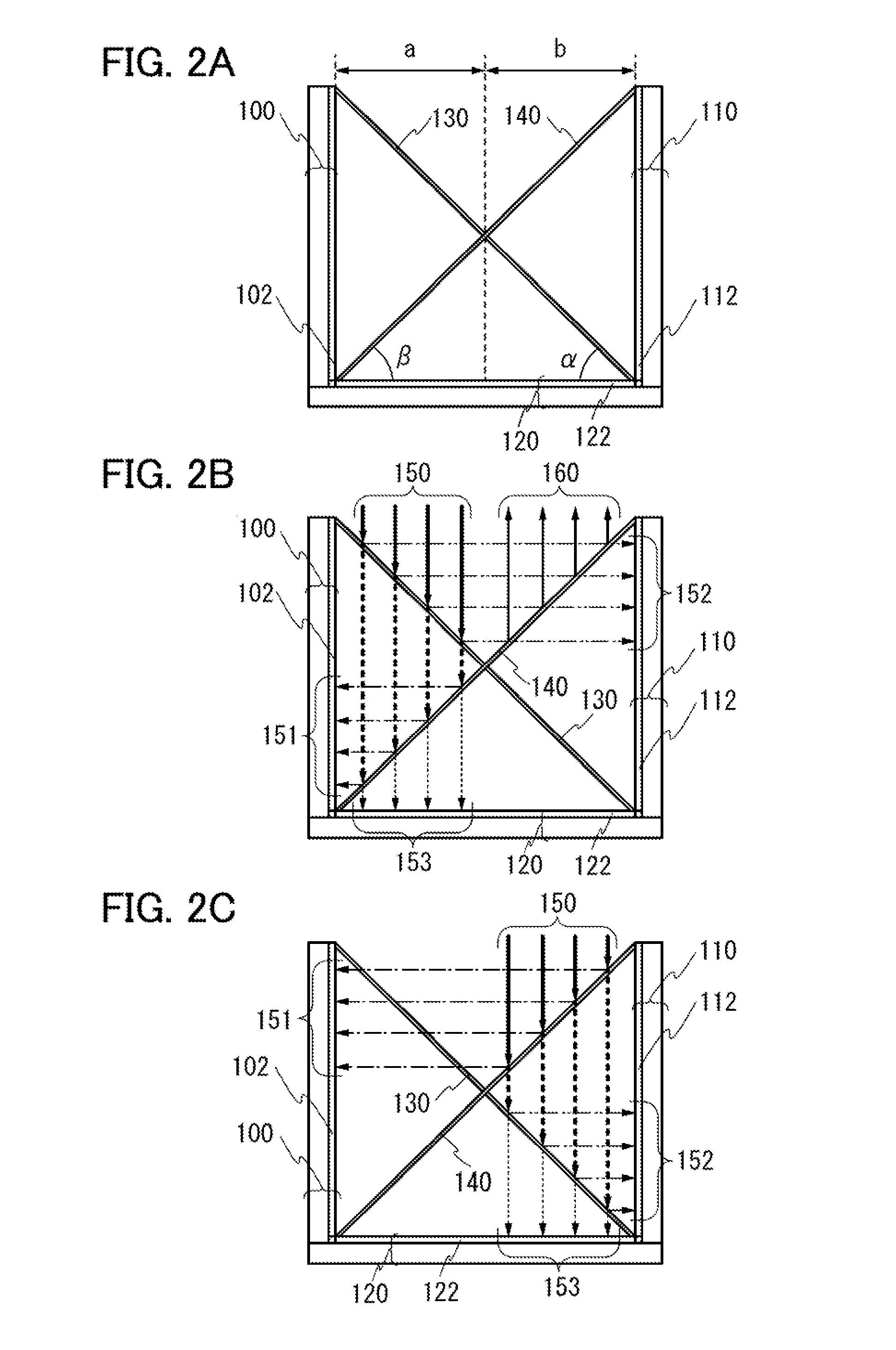Photoelectric conversion device
a conversion device and photoelectric technology, applied in the direction of photovoltaics, semiconductor devices, electrical equipment, etc., can solve the problems of the decrease in the amount of electric power generated, and achieve the effect of generating a large amount of electric power
- Summary
- Abstract
- Description
- Claims
- Application Information
AI Technical Summary
Benefits of technology
Problems solved by technology
Method used
Image
Examples
embodiment 1
[0044]In the present embodiment, a photoelectric conversion device according to an aspect of the invention to be disclosed will be described with reference to FIGS. 1A to 1C, FIGS. 2A to 2C, and FIGS. 3A to 3C.
[0045]FIGS. 1A to 1C show structure diagrams of a photoelectric conversion device in the present embodiment. FIG. 1A is a perspective view of the photoelectric conversion device in the present embodiment, FIG. 1B is a diagram selectively illustrating a section of the structure in FIG. 1A, and FIG. 1C is a side view of FIG. 1A.
[0046]The photoelectric conversion device according to the present embodiment has, as shown in FIG. 1A, a first substrate 100 including a first base substrate 101 and a first photoelectric conversion element 102, a second substrate 110 including a second base substrate 111 and a second photoelectric conversion element 112, and a third substrate 120 including a third base substrate 121 and a third photoelectric conversion element 122, which are arranged in...
embodiment 2
[0097]In the present embodiment, a function will be described with reference to FIGS. 4A and 4B, which is different from that of the photoelectric conversion device according to one aspect of the present invention as described in Embodiment 1.
[0098]FIG. 4A is a side view of the same photoelectric conversion device as in FIG. 2A. The photoelectric conversion device described in the present embodiment has a structure as shown in FIG. 4A, in which a first hollow section 510 surrounded by the first substrate 100, the first light-dividing device 130, and the second light-dividing device 140, a second hollow section 520 surrounded by the second substrate 110, the first light-dividing device 130, and the second light-dividing device 140, and a third hollow section 530 surrounded by the third substrate 120 the first light-dividing device 130, and the second light-dividing device 140 are formed by securing the fixing portions (circular sections of dotted lines in FIG. 4A) of the substrates a...
embodiment 3
[0105]In the present embodiment, a photoelectric conversion device will be described with reference to FIGS. 5A to 5C and FIGS. 6A and 6B, which includes the plurality of photoelectric conversion devices described in the embodiments above.
[0106]It is to be noted that when one photoelectric conversion device is to be specified among the plurality of placed photoelectric conversion devices, the device is represented by using coordinates in FIGS. 5A to 5C and FIGS. 6A and 6B. For example, the photoelectric conversion device placed in the center of FIG. 5A is represented as the “photoelectric conversion device in the range of X2 and Y2”, and the three photoelectric conversion devices placed in the front in FIG. 5A are represented as the “photoelectric conversion devices in the range of X1-X2-X3 and Y1”.
[0107]FIG. 5A is a diagram illustrating a photoelectric conversion device in which a plurality of photoelectric conversion devices with the structure of FIG. 1A as described in Embodiment...
PUM
 Login to View More
Login to View More Abstract
Description
Claims
Application Information
 Login to View More
Login to View More - R&D
- Intellectual Property
- Life Sciences
- Materials
- Tech Scout
- Unparalleled Data Quality
- Higher Quality Content
- 60% Fewer Hallucinations
Browse by: Latest US Patents, China's latest patents, Technical Efficacy Thesaurus, Application Domain, Technology Topic, Popular Technical Reports.
© 2025 PatSnap. All rights reserved.Legal|Privacy policy|Modern Slavery Act Transparency Statement|Sitemap|About US| Contact US: help@patsnap.com



